DEPARTMENT OF NATURAL RESOURCES AND ENVIRONMENTAL CONTROL
Division of Air Quality
PROPOSED
PUBLIC NOTICE
SAN # 2023-13
DOCKET # 2023-R-A-0025
1105 Particulate Emissions from Industrial Process Operations
1. TITLE OF THE REGULATIONS:
7 DE Admin. Code 1105 "Particulate Emissions from Industrial Process Operations".
2. BRIEF SYNOPSIS OF THE SUBJECT, SUBSTANCE AND ISSUES:
The Division of Air Quality of the Department of Natural Resources and Environmental Control (DNREC) is proposing to amend 7 DE Admin. Code 1105, Sections 1.0 "General Provisions" and Section 2.0 "General Restrictions", regarding limits to particulate emissions from industrial process during the startup, shutdown and malfunction of equipment.
On June 12, 2015 the Environmental Protection Agency (EPA) identified the State Implementation Plans (SIP) of 36 states as inadequate because they allegedly allowed unregulated excess emissions (80 FR 33840). This EPA action is known as the "Startup, Shutdown, and Malfunction (SSM) SIP Call'. 7 DE Admin. Code 1105 "Particulate Emissions from Industrial Process Operations" was cited in the SSM SIP Call because the EPA believed the regulation did not appropriately restrict emissions during startup or shutdown events. On October 23, 2023 EPA issued a final rule disapproving Delaware's November 26, 2016 SSM SIP Call submittal for Regulation 1105 (88 FR 72688). Delaware is proposing to amend Regulation 1105 in response to EPA's disapproval, to comply with the 2015 SSM SIP Call.
3. POSSIBLE TERMS OF THE AGENCY ACTION:
None.
4. STATUTORY BASIS OR LEGAL AUTHORITY TO ACT:
7 Del.C. Ch. 60, Section 6010 (a) and (c).
5. OTHER REGULATIONS THAT MAY BE AFFECTED BY THE PROPOSAL:
None.
6. NOTICE OF PUBLIC COMMENT:
A virtual public hearing (Docket # 2023-R-A-0025) will be held on Tuesday, August 27, 2024, beginning at 6 p.m. The web link to the virtual hearing can be accessed through the DNREC Public Hearings site at https://de.gov/dnrechearings. If prompted for a password, please use: 478566. To access the audio-only portion of the virtual hearing, dial 1-646-931-3860 and enter the Meeting ID 837 6527 6725. Closed captioning in over 20 languages, including English and Spanish, is available to attendees via the Zoom platform utilized for all DNREC Public Hearings.
Those wishing to offer verbal comments during DNREC virtual public hearings must pre-register no later than noon on the date of the virtual hearing at https://de.gov/dnreccomments or by telephone at 302-739-9001.
The proposed amendments may be inspected online starting August 1, 2024 at http://regulations.delaware.gov/services/current_issue.shtml, or in-person, by appointment only, by contacting Kelsey Pangman by phone at 302-323-4542 or by email at Kelsey.Pangman@delaware.gov.
The Department will accept public comment through the close of business on Wednesday, September 11, 2024. Comments will be accepted in written form via email to DNRECHearingComments@delaware.gov, or by using the online form at https://de.gov/dnreccomments, or by U.S. mail to the following address:
Theresa Smith, Hearing Officer
DNREC - Office of the Secretary
89 Kings Highway, Dover, DE 19901
7. PREPARED BY:
Kelsey Pangman
Division of Air Quality-DNREC
715 Grantham Ln, New Castle, DE 19702
Phone: (302)323-4542; email: Kelsey.Pangman@delaware.gov
1105 Particulate Emissions from Industrial Process Operations
01/11/2017
1.1 The emission of particulate matter from industrial process equipment shall be controlled to a limit that shall meet the ambient air quality requirements.
1.2 The provisions of this Regulation shall not apply to indirect heat exchangers which shall be controlled by 7 DE Admin. Code 1104.
1.3 For all tables in this Regulation, unless otherwise indicated, the emission limitation for a process weight rate between any two consecutive process weight rates shall be determined by linear interpolation.
1.4 For all tables in this Regulation, unless otherwise indicated, the emission limitation for process weight rate above the maximum process weight rate or below the minimum process weight rate shall be determined by linear extrapolation.
1.5 For purposes of this Regulation, the allowable mass emission rate of particulate matter shall be determined for individual units of equipment.
1.6 For operations involving similar units which are manifolded to a common stack, control techniques shall be such that no unit is emitting particulate matter at a rate which is in excess of the mass emission rate allowed by this Regulation.
1.7 The provisions of subsection 2.1 of this Regulation shall not apply to the start-up and shutdown of equipment which operates continuously or in an extended steady state when emissions from such equipment during start-up and shutdown are governed by an operation permit issued pursuant to the provisions of Section 2.0 of 7 DE Admin. Code 1102.
01/11/2017
2.1 No person shall cause or allow particulate emissions into the atmosphere from any source not provided for in subsequent sections of this Regulation in excess of 0.2 grains per standard cubic foot.
2.2 No person shall cause or allow particulate emissions into the atmosphere from any source not provided for in subsequent sections of this Regulation in excess of 0.2 grains per standard cubic foot on a 30-day rolling average basis.
02/01/81
3.1 No person shall cause or allow particulate emissions from a hot mix asphalt batching plant into the atmosphere in excess of the quantity as listed in Table 3-1 of this regulation.
Table 3-1
Allowable Mass Emission Rate From Hot Mix Asphalt Batching Operation
|
Process Weight Rate (Pounds Per Hour) |
Stack Emission Rate (Pounds Per Hour) |
|
|
10,000 20,000 30,000 40,000 50,000 100,000 200,000 300,000 400,000 500,000 600,000 |
10 16 22 28 31 33 37 40 43 47 50 |
01/11/2017
4.1 No person shall cause or allow particulate emissions from secondary metal operations into the atmosphere in excess of the quantity as listed in Table 4-1 of this regulation.
Table 4-1
Allowable Mass Emission Rate From Secondary Metal Operations
|
Process Weight Rate (Pounds per Hour) |
Stack Emission Rate (Pounds per Hour) |
|
1,000 |
0.75 |
|
2,000 |
1.50 |
|
3,000 |
2.25 |
|
4,000 |
3.00 |
|
5,000 |
3.75 |
|
6,000 |
4.50 |
|
7,000 |
5.25 |
|
8,000 |
6.00 |
|
9,000 |
6.75 |
|
10,000 |
7.50 |
|
12,000 |
9.00 |
|
16,000 |
12.00 |
|
18,000 |
13.50 |
|
20,000 |
15.00 |
|
30,000 |
22.50 |
|
40,000 |
30.00 |
|
50,000 |
37.50 |
4.2 The provisions of subsection 4.1 of this regulation shall not apply to electric arc furnaces, and their associated dust-handling equipment, with a capacity of more than 100 tons.
01/11/2017
5.1 No person shall cause or allow particulate emissions from catalytic cracking operations into the atmosphere in excess of the quantities as indicated in Table 5-1 of this regulation. For the purpose of interpolation and extrapolation calculations, "Coke Burn-Off Rate" shall be construed to be equivalent to "Process Weight Rate."
Table 5-1
Allowable Mass Emission Rate From Catalytic Cracking Operations
|
Coke Burn-Off Rate (Pounds per Hour) |
Mass Emission Rate (Pounds per Hour) |
|
7,000 |
50 |
|
14,000 |
100 |
|
21,000 |
150 |
|
28,000 |
200 |
|
42,000 |
300 |
|
56,000 |
400 |
|
70,000 |
500 |
For the purpose of interpolation and extrapolation calculations, "Coke Burn-Off Rate" shall be construed to be equivalent to "Process Weight Rate."
5.2 No person shall cause or allow particulate emissions from fluid coking operations into the atmosphere in excess of the quantities as indicated in Table 5-2 of this regulation.
Table 5-2
Allowable Mass Emission Rate From Fluid Coking Operations
|
Process Weight Rate (Barrels per Day of Fresh Feed) |
Mass Emission Rate (Pounds per Hour) |
|
5,000 |
15 |
|
10,000 |
30 |
|
15,000 |
50 |
|
20,000 |
80 |
|
30,000 |
100 |
|
40,000 |
125 |
|
50,000 |
150 |
02/01/1981
6.1 No person shall cause or allow particulate emissions from prilling operations into the atmosphere in excess of the quantities as indicated in Table 6-1 of this regulation.
Table 6-1
Allowable Mass Emissions Rate From Prilling Operations
|
Process Weight Rate (Pounds per Hour) |
Mass Emission Rate (Pounds per Hour) |
|
5,000 |
25 |
|
10,000 |
50 |
|
15,000 |
75 |
|
20,000 |
100 |
|
25,000 |
125 |
|
50,000 |
250 |
|
75,000 |
375 |
|
100,000 |
500 |
02/01/1981
Persons responsible for a source operation from which potentially hazardous particulate matter may be emitted such as, but not limited to, lead, arsenic, beryllium, silica, asbestos, and other such materials shall list such contaminants and their exit concentrations in a written report to the Department. The Department shall assign emission limits on an individual basis.







